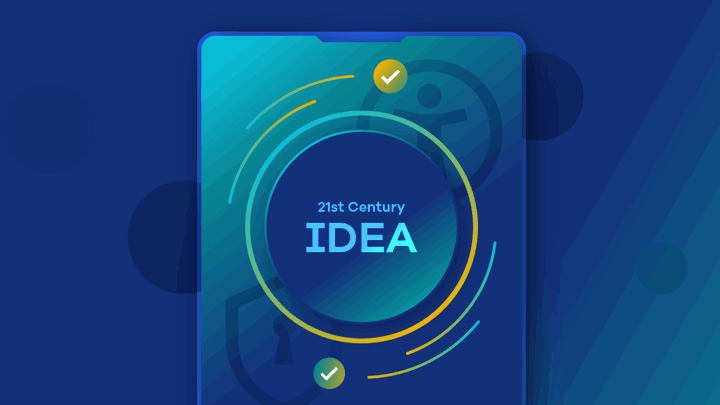If you work with or in some part of the US federal government, you’ve probably heard of 21st Century IDEA. But as with any law, there are a lot of questions about what it means, who it applies to, and how to get and stay compliant.
Here, we’ll walk you through everything you need to know and how you can work towards compliance.
What is 21st Century IDEA?
The 21st Century Integrated Digital Experience Act (or 21st Century IDEA) is a law that requires federal agencies meet five requirements:
- Modernize their websites
- Digitize services and forms
- Create a plan for implementing e-signatures
- Improve customer experience
- Standardize and align their websites
The first section of the law, website modernization, outlines very specific criteria federal agencies must meet, while other sections are less prescriptive. We’ll jump into the details of website modernization later on.
Who does it apply to?
This law applies to all executive agencies in the US. Executive agencies are federal agencies that fall under the Executive Office of the President or one of the 15 executive departments (independent agencies that have been confirmed by the Senate also qualify).
For example, the Federal Aviation Administration is a federal agency that’s housed under the Department of Transportation. There are hundreds of federal agencies in the US, giving the law a massive reach.
What does “website modernization” mean under the law?
Think about the websites you use most often in your personal life: Amazon, Netflix, Twitter, YouTube, etc. All of these sites are easy to navigate and suggest more content, products, or accounts to follow based on your behavior—they’re personalized and very easy to use.
Compare that to the last government website you were on. Generally, there’s a huge difference in usability, experience, and personalization. As consumers, we’ve become accustomed to conducting much of our personal lives online—our expectations for websites has skyrocketed, and this law is meant to address that.
Section one of the law outlines eight different criteria that federal agency websites must meet in order to modernize their website and services:
- Accessible: Sites must be accessible in accordance with Section 508 (or WCAG 2.0 A and AA)
- Consistent: Each website needs to have a consistent appearance
- Unique: Sites cannot overlap with or duplicate any legacy websites
- Searchable: There must be a search function
- Secure: Sites must have an “industry standard secure connection”
- User-centric: Sites must be designed around user needs (supported by data)
- Customizable: Sites and services should be customizable, efficient, and accurate
- Mobile: Sites must be mobile friendly
Why is 21st Century IDEA a good thing?
Usability
Simply put, this law is beneficial to users because it “ensures government leverages available technology to provide the cohesive, user-friendly online service that people around this country expect and deserve,” said the bill’s sponsor, California Representative Ro Khanna.
In the last 90 days, there were 6.47 billion visits to US government websites, with 55% of those visits coming from mobile devices, according to the government’s Digital Analytics Program. A single department can have millions of visits over a 90 day period—the Department of Education alone had 20.3 million visits in the last 90 days.
All that to say, a lot of people use and depend on governmental websites, and unfortunately, the usability of those sites is poor. Forrester rates the overall customer experience of federal agency websites every year. For the last three years, the average score of those websites landed firmly in the “poor” category. In 2019, the average score was 59 out of 100.
Cost
The law requires that non-digital services are made available online “in a manner that decreases cost.” And there’s good reason for that. When the IRS serves customers, it costs them:
- $67 per in-person visit to one of their tax assistant centers
- $41 per phone call
- $0.10 per website visit
Michael Lin, the IRS chief of user experience and design, said, “One of our goals for our digital transformation is to identify high-volume, low-complexity tasks and move them from traditional channels, such as the phone line or in person, to online.”
Not only is digital self-service convenient for users who need information or help from government websites, it also saves a lot of taxpayer dollars in the long run - woohoo!
Timeline for 21st Century IDEA
So, where are we in the 21st Century IDEA timeline and by when do you need to be compliant? Below is a timeline for what has happened and what’s yet to come.
December 2018
- The bill was passed and made law
June 2019
- All new websites and redesigned websites must meet the modernization criteria
- Agencies must:
- Identify non-digital services
- Prioritize those non-digital services by the greatest possible impact to the public by making them digital
- Submit a budget request that includes an estimation of costs
- Agencies must submit a plan for how they will accelerate the use of electronic signatures
December 2019
- Each agency must:
- Review every website and digital service
- Submit a report to Congress that includes a list of most viewed and most important websites, how those websites and services will be prioritized for modernization, and a cost estimate for doing so
- Agencies must submit their first report. Reports must be submitted every year for five years.
December 2020
- All forms must be made digital
Your guide to aligning with 21st Century IDEA requirements
While the law itself is straightforward, the actual process of modernizing large, complex legacy websites is a daunting task. We recommend laying a strong foundation from which to build from by going through the five steps we outline in our guide to preparing and complying with 21st Century IDEA. In this guide, we'll cover everything from how you can:
- Get on top of what the law requires
- Get a strong foundation with five easy steps
- Choose a compliance partner
- Remember the law is meant to benefit users


